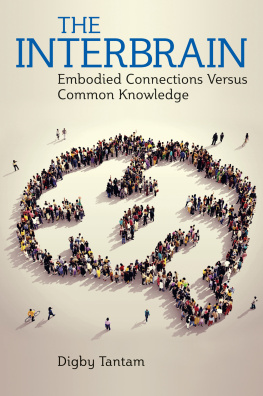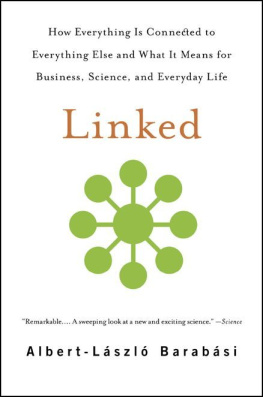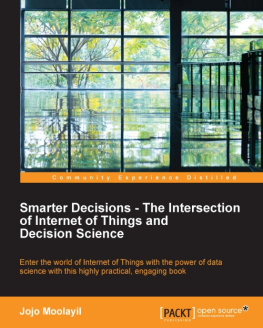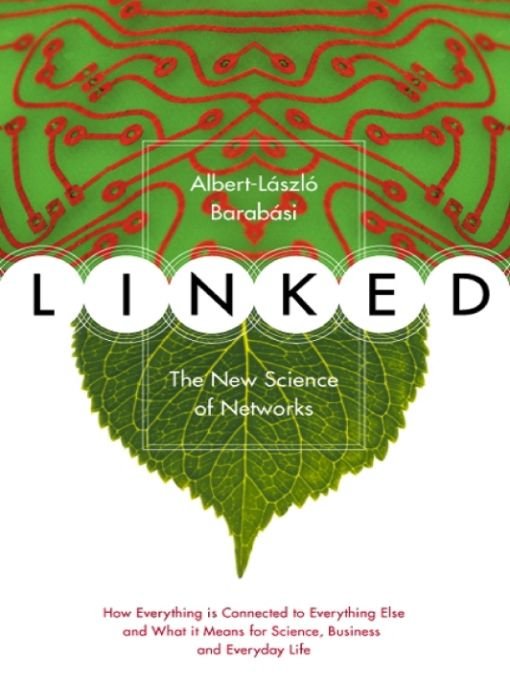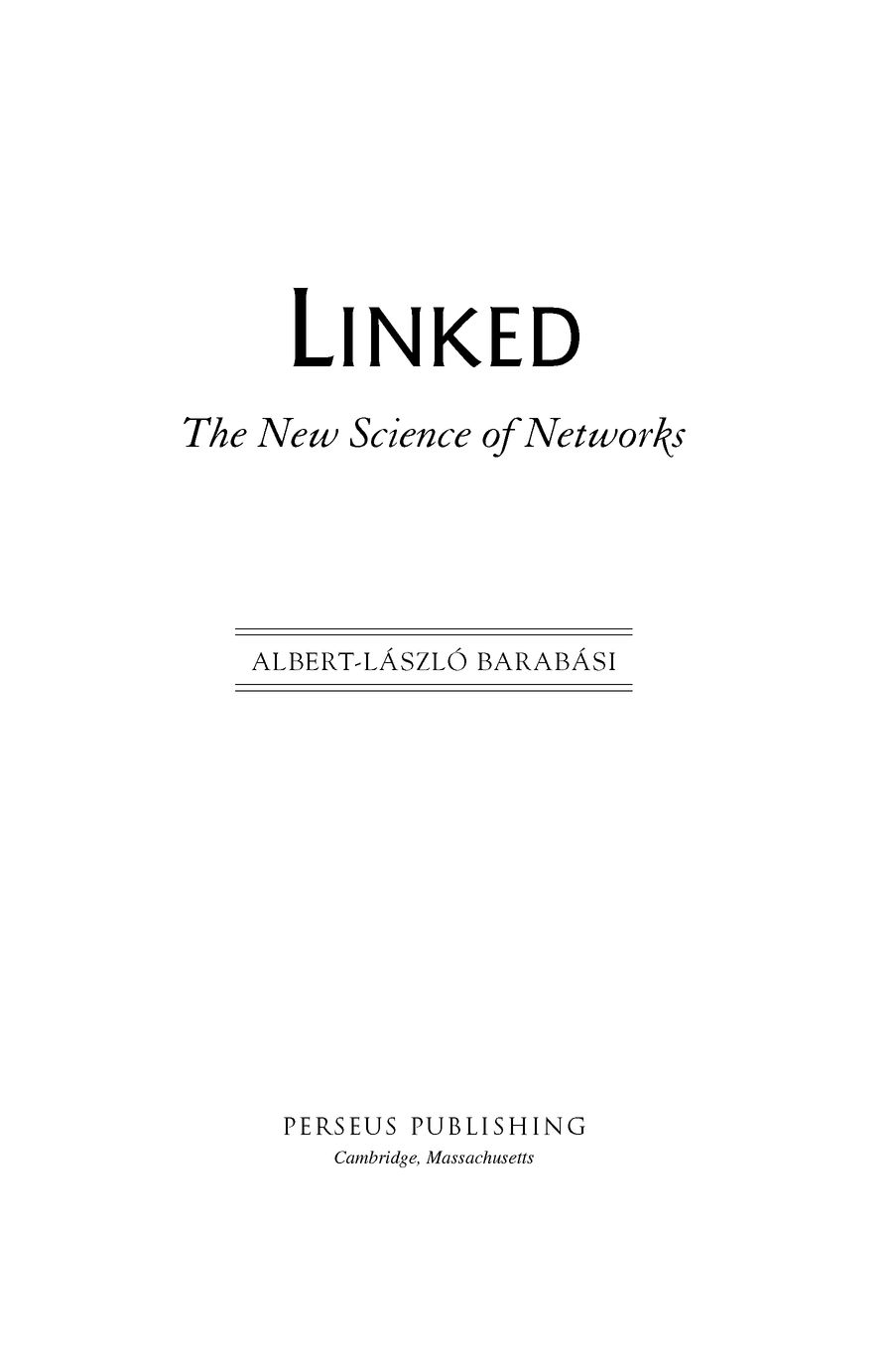Table of Contents
Szleimnek
THE FIRST LINK
Introduction
FEBRUARY 7, 2000, SHOULD HAVE BEEN a big day for Yahoo. Instead of the few million customers that daily flock to the Internet search engine, billions tried to enter the site. Such exploding popularity should have turned the company into the most valuable asset of the new economy. There was a problem, however. They all arrived at the exact same time and not one of them asked for a stock quote or a pecan pie recipe. Rather, they all sent, in scripted computer language, the message Yes, I heard you! Yahoo, as far as it could tell, had said nothing. Nevertheless, hundreds of computers in Yahoos Santa Clara, California, headquarters were kept busy responding to these screaming ghosts, while millions of legitimate customers, who wanted a movie title or an airline ticket, waited. I was one of them. Naturally I had no idea that Yahoo was frantically busy serving ten billion ghosts. I was patient for about three minutes before I moved to a more responsive search engine. The next day the royals of the Web, Amazon.com, eBay, CNN.com, ETrade, and Excite, fell under the same spell: They too were obliged to serve billions of ghosts making the same fruitless inquiry that had handicapped Yahoo. True consumers, with shiny credit cards ready for purchases, were forced to wait on the sidelines.
Of course, getting billions of real computer users to type Yahoo.com into their browser at precisely 10:20 Pacific Standard Time is impossible. There are simply not enough computers around. Early news reports construed the shutdown of the leading e-commerce sites to be the work of a group of sophisticated hackers. The consensus was that these renegade geeks, fascinated by the challenge of outsmarting sophisticated security systems, had hijacked hundreds of computers in schools, research labs, and businesses and turned them into zombies, telling Yahoo thousands of times, Yes, I heard you. Every second, huge amounts of data were thrown at this prominent Website, much more than it could ever handle. The massive denial-of-service attack Yahoo was experiencing set off a much-publicized international hunt for the hackers responsible.
Surprisingly, the high-profile operation of the Federal Bureau of Investigation did not lead to the much-anticipated cyberterrorist organization. Instead, the FBI arrived at the suburban home of a Canadian teenager. Investigators eavesdropping on an Internet chat room overheard the teen soliciting suggestions for new targets to attack. He was caught bragging.
Hiding behind the pseudonym MafiaBoy, this fifteen-year-old successfully halted the operations of billion-dollar companies with access to the best computer security experts in the world. Was he a contemporary David who, armed with the humblest of home computer slingshots, beat the mega-Goliaths of the information age? In hindsight, experts agree on one thing: The attacks were not the work of a genius. They were executed using tools available to anybody on various hacker Websites. MafiaBoys online antics revealed him to be a rank amateur, whose sloppy trail led the police right to his parents door. In fact, his actions were more reminiscent of a Goliath than David: Lacking the know-how to penetrate any of the sites he attacked and clumsy and slow on his feet, he only managed to take down easy targets, obviously vulnerable computers from universities and small companies, which he simply instructed to bombard Yahoo with messages.
One can imagine a fifteen-year-old boy behind his bedroom door, in the glow of his computer, finding sweet satisfaction in the protracted Yes, I heard you! hurled at Yahoo. He must have screamed that phrase himself a million times when Mom or Dad called him to come to dinner or take out the trash. The attack succeeded with brute force, a lot of nerve, and little sophistication. But this is exactly what makes us wonder, how could this teenagers actions take out the largest corporations of the new economy? If a mere youth can wreak havoc on the Internet, what could a small group of trained and skilled professionals achieve? How vulnerable are we to such attacks?
1.
The early Christians were nothing more than a renegade Jewish sect. Regarded as eccentric and problematic, they were persecuted by both Jewish and Roman authorities. There is no historical evidence that their spiritual leader, Jesus of Nazareth, ever intended to have an impact beyond Judaism. His ideas were difficult and controversial enough for Jews, and reaching the gentiles seemed particularly hopeless. As a starter, those non-Jews who wanted to follow in his footsteps had to undergo circumcision, had to obey the laws of contemporary Judaism, and were excluded from the Templethe spiritual center of early Jewish Christianity. Very few walked the path. Indeed, reaching them with the message was almost impossible. In a fragmented and earthbound society news and ideas traveled by foot, and the distances were long. Christianity, like many other religious movements in human history, seemed doomed to oblivion. Despite the odds, close to two billion people call themselves Christian today. How did that happen? How did the unorthodox beliefs of a small and disdained Jewish sect come to form the basis of the Western worlds dominant religion?
Many credit the triumph of Christianity to the message offered by the historical figure we know today as Jesus of Nazareth. Today, marketing experts would describe his message as stickyit resonated and was passed down by generations while other religious movements fizzled and died. But credit for the success of Christianity in fact goes to an orthodox and pious Jew who never met Jesus. While his Hebrew name was Saul, he is better known to us by his Roman name, Paul. Pauls life mission was to curb Christianity. He traveled from community to community persecuting Christians because they put Jesus, condemned by the authorities as a blasphemer, on the same level as God. He used scourging, ban, and excommunication to uphold the traditions and to force the deviants to adhere to Jewish law. Nevertheless, according to historical accounts, this fierce persecutor of Christians underwent a sudden conversion in the year 34 and became the fiercest supporter of the new faith, making it possible for a small Jewish sect to become the dominant religion in the Western world for the next 2,000 years.
How did Pauls efforts succeed? He understood that for Christianity to spread beyond Judaism, the high barriers to becoming a Christian had to be abolished. Circumcision and the strict food laws had to be relaxed. He took his message to the original disciples of Jesus in Jerusalem and received the mandate to continue evangelization without demanding circumcision.
But Paul understood that this was not enough: The message had to spread. So he used his firsthand knowledge of the social network of the first centurys civilized world from Rome to Jerusalem to reach and convert as many people as he could. He walked nearly 10,000 miles in the next twelve years of his life. He did not wander randomly, however; he reached out to the biggest communities of his era, to the people and places in which the faith could germinate and spread most effectively. He was the first and by far the most effective salesperson of Christianity, using theology and social networks equally effectively. So should he, or Jesus, or the message be credited for Christianitys success? Could it happen again?




